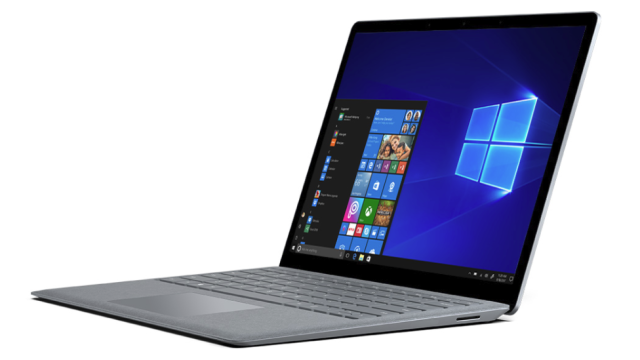When Microsoft introduced Windows 10S last year, I was deeply concerned. If you didn’t think too hard about it, it kind of sounded like a good idea: A lightweight version of regular Windows 10, designed for systems without a ton horsepower, and a potentially competitive alternative to affordable Chromebooks, which have become a big hit and in the education market. Sounds OK so far, right?
Image: Microsoft
But the downsides really add up. You can’t install normal Windows programs on 10S, because the only software it can handle are UWP (Universal Windows Platform) apps from the Windows store. Goddamnit, 10S is just Windows RT all over again. And unlike Chromebooks, which have a wealth of compatible software thanks to support for standard Android apps, the Windows Store often feels like a barren wasteland. Some of the big-time apps are there, but anyone who has spent time using 10S knows you’ll end up hitting its limits very quickly.
So really with 10S, Microsoft took the best thing about Windows – it’s ability to play nice with apps from a wide variety of sources – and removed it for the sake of simplicity. Not so nice-sounding now, is it?
To make matters worse, Microsoft went and put Windows 10S on expensive systems such as the Surface Laptop by default, which forced people to waste time upgrading to real Windows 10 to unlock the potential of their $1500 (or more) machine. Although that upgrade was free on the Surface Laptop for a limited time, this wasn’t always true for other systems saddled with Windows 10S, which required users to shell out $79 for the luxury of a real OS.
We use Win10S as an option for schools or businesses that want the ‘low-hassle’/ guaranteed performance version. Next year 10S will be a “mode” of existing versions, not a distinct version. SO … I think it’s totally fine/good that it’s not mentioned.
— Joe Belfiore (@joebelfiore) March 7, 2018
Thankfully, it seems Microsoft has come to its senses. It will be doing away with Windows 10S as a separate, distinct version of Windows, and instead will roll out its functionality into an optional mode built into the OS starting in 2019.
Soon, if a school or business wants to lock down its Windows 10 devices, it can simply turn on 10S mode, without Microsoft having to gimp an entire category of devices. News of this transition leaked back in early February, and now Microsoft’s operating systems vice president, Joe Belfiore, has confirmed the change on Twitter.
Finally, the failed Windows 10S experiment has come to an end. Now things are how they should have been from the start.
